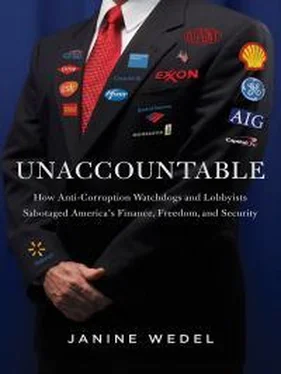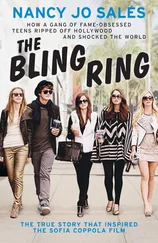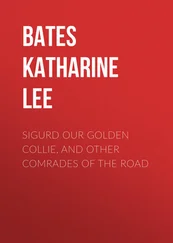[I]nterviews with dozens of academics and traders, and a review of hundreds of emails and other documents involving two highly visible professors in the commodities field . . . show how major players on Wall Street and elsewhere have been aggressive in underwriting and promoting academic work.
When questioned by a reader of his blog whether he was objective, the Times reports, one of the academics responded, “Uhm, no, dipstick.” 39
It’s interesting that this professor responds contemptuously to a patently fair question. In his case, he directs a management institute at his school that has received money from companies involved in speculation. His defense is that he would have believed in speculation regardless of the money, as if the idea that money can incentivize behavior is an absurd one. Consider the irony that this denial of money-based motivation is coming from a professor of finance.
A small dose of public shaming—finally—got some reaction in the form of a code of ethics for economists. But the money and status from outside activities are so desirable and the patterns are so well entrenched that it remains to be seen if the new code will have an effect.
Epstein says it will take “five years or so” to know if the code will help “set norms of behavior that colleagues, the press, students and citizens can help hold economists to account.” 40
Indeed, new, practiced standards of conduct are needed.
KOLS, SHADOW LOBBYING
The loss of faith in formal institutions is even more immediate to us, the public, when it comes to medicine and our own health care. When we go to a physician, we expect that professional to offer impartial advice and to act in our best interest. Our physicians, too, no doubt subscribe to the Hippocratic Oath and believe they are doing well by us. But some of our faith may be overblown. It turns out that some of their professional opinions may be influenced, often unbeknownst to them, by members of their professional community who the pharmaceutical and medical device industries call Key Opinion Leaders, or KOLs. 41Typically these experts are high-status physicians or medical researchers who sport impressive credentials and are affiliated with top medical schools, journals, and professional associations.
KOLs are paid or perked for their trouble: they often garner more in consulting fees from the industry than from their academic institutions; 42they can attract honoraria for travel and speaking fees. 43And yet it is their image as neutral, incorruptible scientists that lends them weight. 44The job of these opinion leaders is to convince their fellow professionals that a particular company’s product is the most efficacious. 45They are chosen for their authority among their peers and effectiveness in disseminating the message to their community. “The KOL is a combination of celebrity spokesperson, neighborhood gossip, and the popular kid in high school,” observes Carl Elliott, a professor at the Center for Bioethics at the University of Minnesota who wrote a book on the subject. 46
And comes straight from the shadow-elite playbook: KOLs owe their success in the game in no small measure to flexible identities and fuzzy boundaries. As in the other arenas we’ve looked into, these qualities are essential to their influence and ability to deny that their industry ties have any bearing on their professional opinions. 47The academic physician who sits on the editorial board of a major journal or a medical specialty association can act as a gatekeeper for what gets discussed and published in his field, and we have no way of knowing whose interests are being represented. Your physician hears the talk, reads the journal, reviews the literature, all the while listening to the “authority”—that KOL—in a particular field.
KOLs have proliferated since the end of the Cold War, possibly worldwide. Their use is well documented in the United States, the United Kingdom, Central and Eastern Europe, and Latin America. 48If publication in an industry journal is any indication, their ranks have grown rapidly over the past decade-plus. 49From 2000 to 2010, “the number of articles in . . . Pharmaceutical Executive that mention ‘opinion leader’ roughly tripled,” explains Sergio Sismondo, who studies the intersections of philosophy and sociology of science and has written about these experts. 50Another indication of the increasing use of KOLs is the rise of new businesses that “recruit, train, and manage” them, Elliott says. 51
KOLs and the big pharmaceutical and medical-device companies that underwrite them can have an outsized impact, especially in places where the compensation of physicians, researchers, and government officials is much lower than, say, in the United States and Western Europe. Sociologist Piotr Ozierański, who conducted more than two hundred interviews on the subject in Poland, points to the comparatively huge impact of KOL networks coursing through the Ministry of Health and other government entities, parliamentary bodies, medical professional associations, and the media. These opinion leaders managed to get a particular vaccine mandated and paid for by the Ministry of Health—a windfall for the pharmaceutical company that produced it—despite solid scientific evidence that the drug was ineffective. 52
Framing the Discussion
Wherever they operate, KOLs help define what medical treatments and concerns we should pay attention to. KOLs—typically those focused on research—can frame the very discussion, establishing what issues and opinions are accepted with regard to certain drugs and diseases, says Sismondo. 53Elliott expounds: 54
The reason [KOLs] are so important is their role in managing the discourse around a given product. Equal parts scientific study, commercial hype, and academic buzz, this discourse will begin years before a drug or device is brought onto the market, and will usually continue at least until the patent expires. If a company can manage the discourse effectively, it can establish the desperate need for its drug, spin clinical-trial results to its advantage, downplay the side effects of a drug, neutralize its critics, and play up the drug’s off-label uses. . . . 55Virtually all physicians are on the receiving end of this communication, but only a relatively few deliver it. If the industry can influence those few, then it can also influence the rest.
Researcher KOLs not only sway opinion about the efficacy of a drug to treat a condition; they also influence the very fact of defining that condition as an illness. A case in point is researcher KOLs in the United States working on female sexual dysfunction. According to Sismondo, they 56
. . . acted as mediators between pharmaceutical companies, the FDA, physicians, and potential consumers. 57They held industry-sponsored workshops and wrote position papers that solidified female sexual dysfunction as an illness, thereby positioning themselves as the very experts to whom the FDA would turn for advice on drug submissions and to whom the media would turn for interviews and information.
Leading, Under Cover
KOLs often operate as intermediaries between government agencies, the medical community, and the public. In Argentina, multinational drug companies have enlisted opinion leaders to help forge alliances. They participate in seminars and symposia, pen “scientific literature” for circulation, and act “something like a brand spokesman,” says anthropologist Andrew Lakoff. 58
Still, these opinion leaders do not explicitly and openly endorse specific drugs, “at least not in ways that are too obvious,” Elliott writes. Their ways are subtle and varied, and their views are disseminated 59
. . . sometimes by word of mouth, but more often by quasi-academic activities, such as grand-rounds lectures, sponsored symposia, or articles in medical journals (which may be ghostwritten by hired medical writers).
Читать дальше












